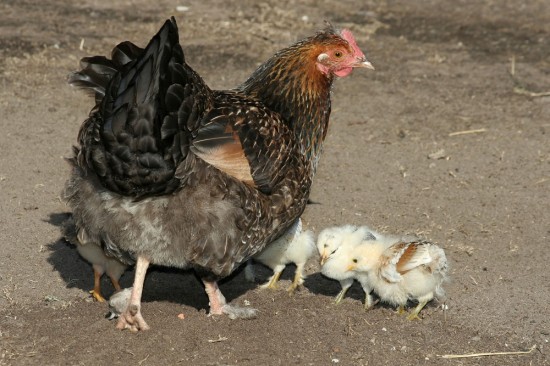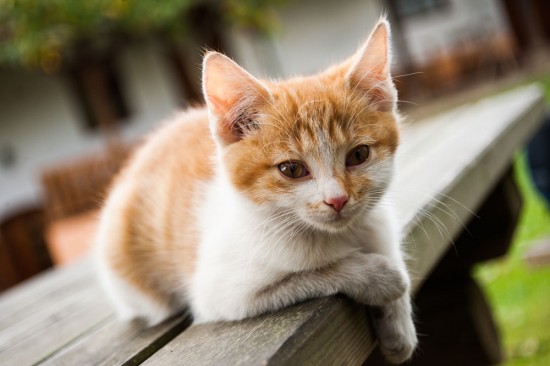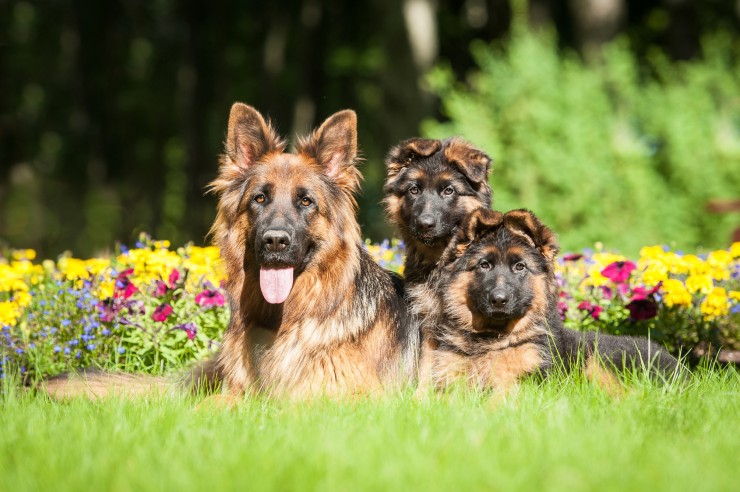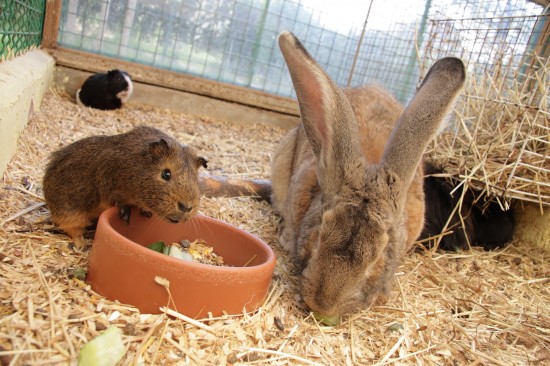

If you've started keeping chickens and a cockerel or two, you may be tempted to let one or maybe a couple of hens go broody. It's great fun when chicks finally hatch out, although keeping them safe and out of harms way can be a real dilemma. Chicks will follow mum anywhere and she, of course is oblivious to the dangers her little chicks have to face and negotiate. A dish of water may seem harmless enough, but in fact chicks often drown in them, even when they are not that deep. The best thing to do is create a safe environment for your hens and chicks to run around in and ideally this should be large, secure run with its own hen house.
Once a hen goes broody it takes twenty one days before her chicks start to hatch out. Some hens sit on anything up to twelve or more eggs and if you are lucky, all of them may hatch although you usually lose a few of them. Mum will stay sitting on the eggs until they are dry and fluffed up. Then she's off with her hatched chicks in tow.
You need to have created a safe environment before this happens because once a hen is off the nest she starts chasing around, hens and chicks are pretty mobile as mum teaches her offspring to scratch in the dirt and catch insects. If you normally keep your hens free range, it could be a good idea to put them in a run with its own hutch when they are still sitting on their eggs. When you move them to their new home, make sure you do it at night because it will be a lot easier than attempting the move during the day. Chickens go virtually immobile when it's dark and are easier to handle.
With your hen or hens safely ensconced in a secure environment, chicks will stand a better chance of surviving. This of course, is just until the chicks are old enough to negotiate things like a water dish or anything else that presents a danger to them. Then you can let mum and her chicks run free range again.
Once mum has come off her nest, make sure you clean it out and replace all the soiled bedding with some clean fresh straw of whatever you use. You should clean out her nesting box as often as you can to keep everything as hygenic as possible. As long as the hen and her young are off the nest, you can easily do this during the day. However, avoid cleaning out the nest box when the hen is sitting on her chicks because it may just stress her out.
Make sure the holes in the wire of the run are small. If they're too big, you may find chicks can escape through them – if any of the chicks are outside the run, it will stress mum out and cause all sorts of problems. Like most animals who escape, chicks seldom know how to get back in once they get out! One way of solving the problem is to buy some smaller holed wire and fit this over any wire with larger holes so that chicks can't escape. It's a cheap way of solving the problem that works really well.
Take out any deep water dishes and replace them with a few shallow ones which chicks won't be able to drown in. This may mean having to fill up the water dishes more often, but rather this than finding dead chicks in water bowls which can be very disheartening.
Check to see there are no gaps between the run and the chicken house too. Chicks often get stuck in small gaps or may be able to get through, an again once on the outside, a chick running around on its own will get into all sorts of trouble.
You'll need to feed mum and her chicks a specially formulated food which is called starter chick crumbs. It contains all the essential trace elements and vitamins that chicks need to get off to a healthy start in life. Carry on feeding them chick crumbs for up to 6 weeks, making sure they always have access to it together with fresh clean water every day, making sure the water level is not too deep.
After the six weeks is up, you can start feeding your hen and her little ones some layers mash mixed with the chick crumbs and then gradually leave out the crumbs, so they are just on layers mash or pellets. You can also give them any scraps you may left over, things you might normally put on your composter. This will add a good variety of food for your hen and her flock to have fun pecking scratching around on and it gives them some extra nourishment too.
You may find you end up with more male chicks than females which at first is not a problem. However, as the chicks grow older, it can be a real issue. You can always put any of the cockerels up for adoption and there are some rescue centres around the country that take unwanted birds in but you would normally be asked to make a donation to the centre.
The next thing you need to consider is in-breeding which can be a real problem if you keep the hen chicks and let them breed with your existing cockerel who is in fact their father. You may find that you are better off keeping the hens away from him to avoid this from happening, which means having to build them a separate pen and chicken house.
It is fun to let a hen or two go broody, but there is a lot of preparation and then after care that needs to be taken into consideration. When the chicks do hatch out, you normally end up with more male chicks than females and this can lead to all sorts of problems as they get older. At the end of the day, you may want to let your hen go broody just once so that you can enjoy the experience of having chicks running around the yard or back garden. But with this said, you do need to think seriously about starting to breed chickens yourself, unless of course you have loads of space to keep them in.
 Hyperadrenocorticism Or Cushing’s Syndrome In Cats
Hyperadrenocortic
Hyperadrenocorticism Or Cushing’s Syndrome In Cats
Hyperadrenocortic
 How You Can Help To Safeguard Animal Welfare When Finding A Dog Online
How You Can Help
How You Can Help To Safeguard Animal Welfare When Finding A Dog Online
How You Can Help
 How To Enrich The Lives Of Rabbits, Guinea Pigs, Hamsters And Gerbils
How To Enrich The
How To Enrich The Lives Of Rabbits, Guinea Pigs, Hamsters And Gerbils
How To Enrich The
 First Aid For Cats
First Aid For Cat
First Aid For Cats
First Aid For Cat
 The Saddle, Types And Development
The Saddle, Types
The Saddle, Types And Development
The Saddle, Types
Copyright © 2005-2016 Pet Information All Rights Reserved
Contact us: www162date@outlook.com